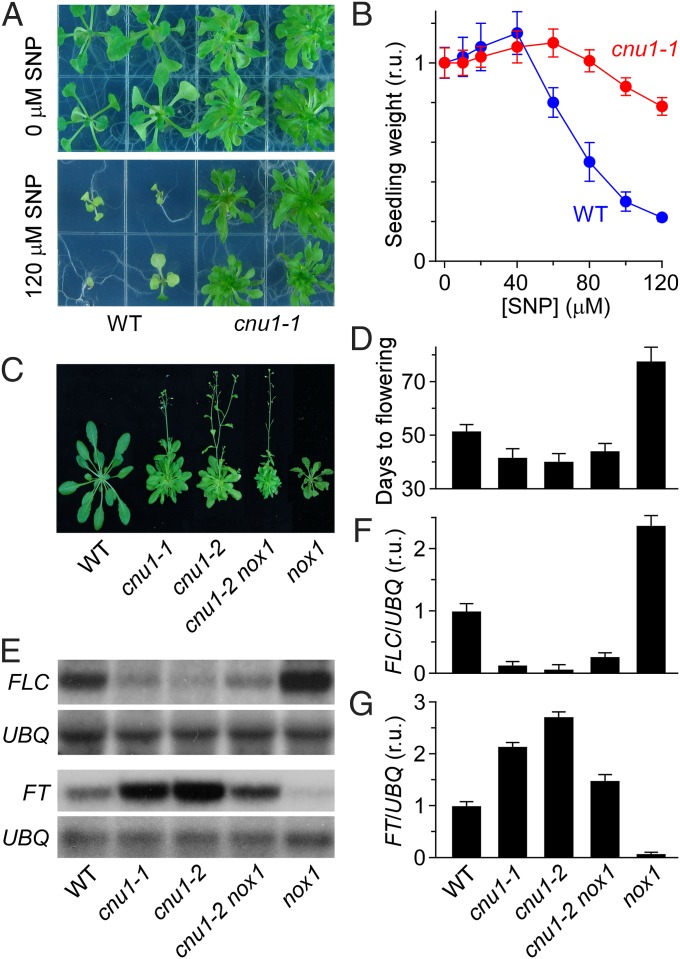Fig. 1.
The cnu1 mutant is insensitive to NO and flowers early. (A) Effects of an NO donor SNP on plant growth and development. Arabidopsis seedlings were grown on petri dishes containing several concentrations of SNP during long days (16-h light/8-h dark) for 3 wk. It can be seen that cnu1 mutants have started flowering, and WT plants are still in the vegetative stage at 120 μM SNP. (B) The effect of SNP concentration on shoot growth. Fresh weight per seedling was from experiments as in A (mean ± SD; n = 150 seedlings). (C and D) The variation of endogenous NO and cytokinin levels affect the onset of flowering in Arabidopsis. The cnu1 mutant and cnu1-2 nox1 double mutant flowers early. Plants were grown on soil under 12-h light/12-h dark cycles and were photographed (C) after 50 d of growth. The days to flowering (D) from experiments as in C were scored (mean ± SD; n ≥ 30 plants). (E–G) The variation of endogenous NO and cytokinin levels affect the expression of genes that control the floral transition in Arabidopsis. The expression levels of FLC and FT, respectively, in WT, cnu1-1, cnu1-2, cnu1-2 nox1, and nox1 plants (E). Seedlings were grown on MS media under 16-h light/8-h dark cycles for 10–12 d. Leaves were collected 8 h after dawn for total RNA extraction. The FLC mRNA abundance was analyzed by using Northern blot and FT mRNA by RT-PCR. Ubiquitin mRNA (UBQ10) was used as a loading control. Quantification of the effects of endogenous NO and cytokinin on flowering repressor FLC (F) and flowering promoter FT (G) expression, respectively, showed that endogenous NO and cytokinins on flowering control gene expression have the opposite effect. The relative mRNA abundance was normalized to the UBQ levels. The relative mRNA abundance of WT was arbitrarily set to 1 (mean ± SEM; n = 3).

